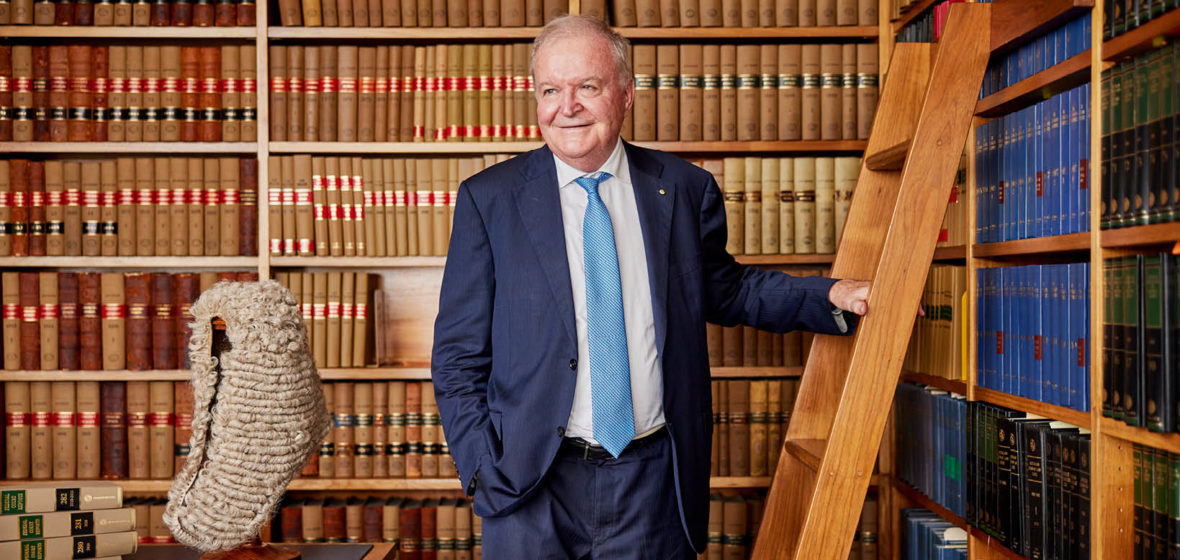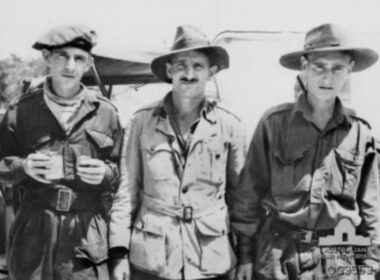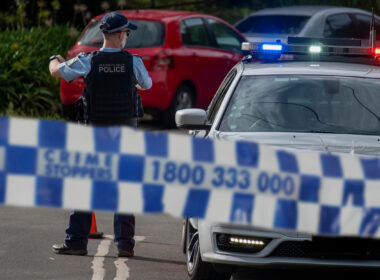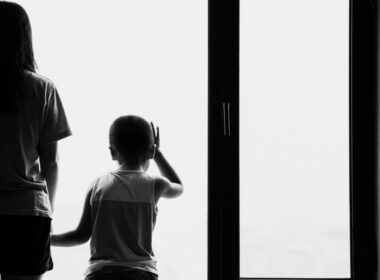On the 200th anniversary of the Supreme Court of NSW, the Chief Justice Tom Bathurst AC, will retire from the judiciary. He reflects on 11 years at the bench.
Chief Justice Tom Bathurst AC began his career 11 years ago at the bench of the highest court in NSW the same way he plans to finish it. Swimming.
Not wading through paperwork or drowning in the magnitude of the duty before him – though he admits he has at times been daunted by both those things – but purposefully stroking through the ocean pool at Balmoral Baths under flossy skies at daybreak.
He developed the daily ritual over 30 years at the Bar and was not about to give up the balance that had helped propel his success thus far.
“Not many can boast meticulous case preparation whilst partly submerged but I understand that swimming provides the necessary concentration required to present watertight cases,” then-President of the Law Society of NSW, Stuart Westgarth, quipped when the Chief Justice was sworn in at the Banco Court in Sydney in 2011.
Speaking with LSJ in an interview on the eve of his retirement from the bench, the Chief Justice says, “It’s funny – you can concentrate while you’re swimming; ideas come.”
We’re perched on the leather couches of his expansive corner office, the prettiest of any so-called “chambers” I have visited in the glossy, towering Supreme Court building in Sydney’s legal district. A temperamental sky grumbles over views to Elizabeth Bay and the Botanic Gardens. The judge admits he skipped his swim this morning, but I posit he likely made up for it on his commute through torrential rain drenching Sydney this week.
“I sometimes used to think about cases [when swimming],” he says. “But I didn’t use it as a workout. It was more recreation.”
It’s the type of recreation His Honour might have a chance to enjoy more in a couple of weeks.
On 5 March he steps down from the NSW Supreme Court bench and draws the curtain on those stunning corner-office views, ending an illustrious 11-year career as Chief Justice. He thanked his family, colleagues, court staff and the legal profession for their support during a rousing speech at his farewell ceremony on Monday 28 February. The NSW Attorney General, Governor of NSW and Governor-General of Australia were in the audience alongside the President of the Law Society of NSW, Joanne van der Plaat, and his successor – current President of the Court of Appeal, Andrew Bell.
“I chose this time to retire, not because I had lost my enthusiasm for the position, but rather as the Court was moving to its 200th anniversary, I believed it was time it be refreshed,” the Chief Justice said.
“Having regard to the calibre of my successor and the other judges of the Court, I am confident it was the right decision.”
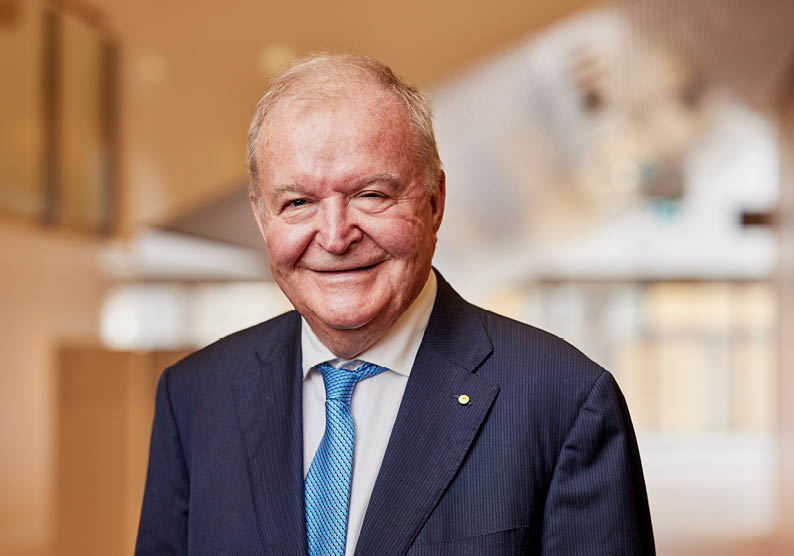
“It struck me when I came [to the court] that there were an awful lot of cases where the costs become a significant proportion of the total financial involvement. It emphasised to me the need for mediation, and we moved to really requiring mediation in almost every case.”
The widely respected judge has led the court through a dramatic period of change, working across the tenure of four Attorneys General, an ever-increasing caseload in the Supreme Court with a notable rise in class actions and defamation disputes. He has seen what he calls “an increasing cross-fertilisation amongst divisions”, with appellate judges sitting in civil and criminal trials. He also reflects with pride that, during that time, he has played a part in steering parties away from costly court cases and toward alternative dispute resolution.
“It struck me when I came [to the court] that there were an awful lot of cases where the costs become a significant proportion of the total financial involvement,” he says. “It emphasised to me the need for mediation, and we moved to really requiring mediation in almost every case.”
Despite admitting he initially felt “to say the least, ill-equipped to carry out the role of Chief Justice,” he tells LSJ he has grown more comfortable in the role, even though it has required a fair amount of adjustment and flexibility.
Through drought, floods, bushfires, and a global pandemic the wheels of justice continued to turn on the Chief Justice’s watch. The rapid uptake of technology by court of technology and remote hearing through the pandemic have been defining features of the past two years. He even presented a “pandemic special” YouTube address when swearing in a cohort of freshly admitted solicitors to NSW in August 2020.
“One advantage of what has happened during the pandemic was that technology was thrust upon the courts,” he tells LSJ.
“Two things could have happened – we could have sort of pushed back against it, which would have been a disaster. Or, we could embrace it and use it.”
The Chief Justice and his colleagues did their best to embrace technology when courts across the country suspended face-to-face hearings in March 2020. NSW moved immediately to hear cases online and via telephone. In a matter of days, courthouses became live streams into lawyers’ bedrooms and home offices.
Of course, there were a few teething issues – children walking into video calls and lawyers appearing underdressed. However, the state’s legal profession adapted remarkably quickly and positively. In fact, a pandemic survey of 1483 solicitors in NSW, published by the Law Society of NSW in February, found most respondents viewed changes to court processes spurred by COVID-19 as positive. The primary efficiencies were reported in the use of online courts for preliminary hearings, interim matters, viewing court files, making applications and lodging documents.
The Chief Justice says he believes the widespread use of technology has improved access to justice.
“At a most basic level, if there’s a solicitor in the country who has a matter in which there’s some minor dispute or something done by consent … they [previously had to] come in themselves, and that’s a few hours or half a day of travelling. If you can do it online, that’s a huge, huge advantage.”
Born in England, the son of an engineer and a champion tennis player, Bathurst seems born with the kind of drive necessary to become Chief Justice. His mother, the late Joan Hartigan, was a champion tennis player who won the Australian Open in 1933, 1934 and 1936. His family moved to Sydney when he was a young boy and was one of nine Supreme Court judges to be schooled at St Ignatius College when he took his position on the bench. He studied Arts/Law at the University of Sydney and was admitted to practice in 1977. However, one of the “great problems” he recalls he had as a solicitor was keeping files organised.
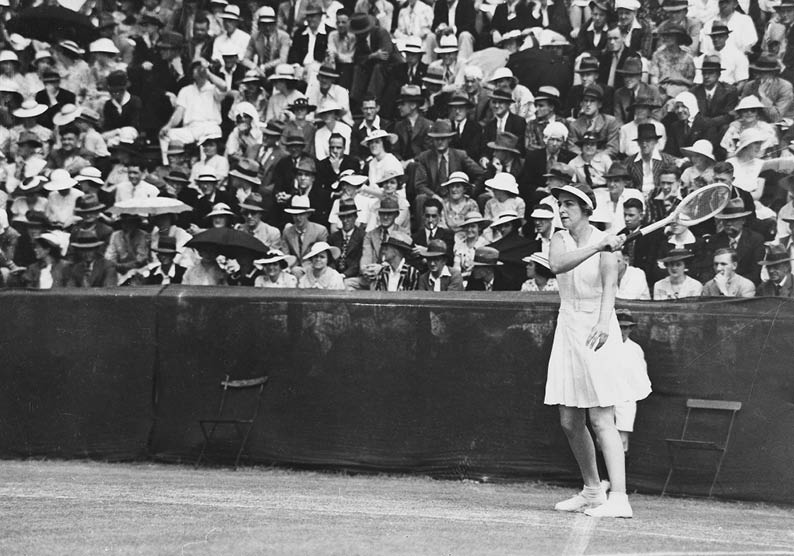
“The day-to-day things I wasn’t very good at,” he says. “The bar had always attracted me … I was doing some litigation as a solicitor and I thought, ‘I wouldn’t mind getting to my feet and doing some of that myself.’”
Once on his feet, Bathurst rapidly began acquiring extensive experience in complex commercial matters. He was awarded Queen’s Counsel in 1988, just 10 years after he was called to the Bar. He had been a solicitor for just five years prior to that. At his swearing-in ceremony in June 2011, then-Attorney General of NSW, Greg Smith, recounted he had heard from a colleague that, “Tom was simply briefed in every commercial matter of any significance going”.
When he reached the other side of the bar table, the Chief Justice presided over most matters of significance, too.
A succession of cases involving misfeasance in public office have made their way to his court, including high-profile ICAC scalps, former NSW Labor ministers Eddie Obeid and Ian Macdonald, and former union boss John Maitland. The 11-year criminal saga of Lin family murderer Robert Xie, a case involving complex scientific evidence, translators and three previously aborted trials, also ended in the NSW Court of Criminal Appeal in 2021 as Xie’s appeal was dismissed.
The Chief Justice’s work has even been showcased to the public via the “new normal” of online court hearings. A series of cases protesting lockdown restrictions, and the legality of rallies staged in support of the Black Lives Matter movement during 2020, threw the court’s doors open to bigger, more engaged audiences than ever before. In 2021, more than 50,000 viewers tuned in to the Supreme Court’s YouTube channel to witness a live stream of cases challenging the legality of mandatory vaccinations for NSW workers.
Rather than worry about such unprecedented public scrutiny, the Chief Justice has welcomed it.
“We’ve now got a mechanism where we can comfortably stream those cases to the public generally,” he tells LSJ.
“It’s terrific because they see actually how the court operates. One thing I think is vital is accessibility, because if you have accessibility, you get a real understanding of what courts actually do.”
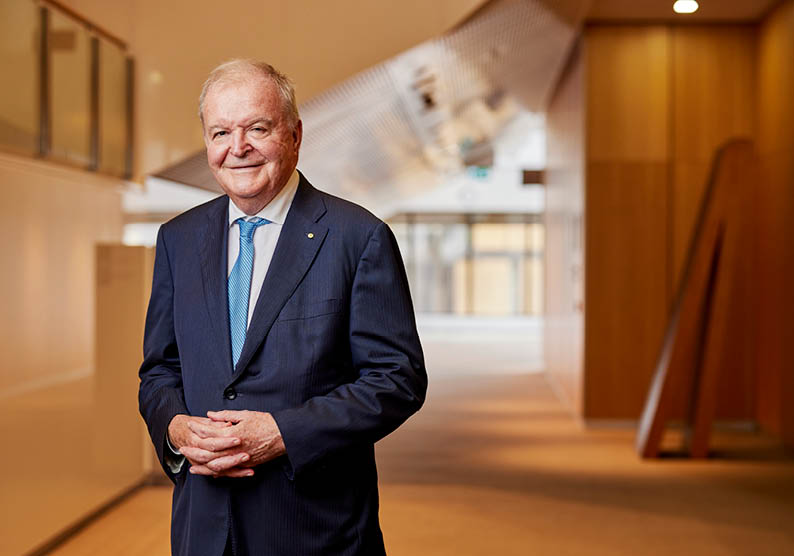
As he prepares to hand the baton to his colleague and successor, Justice Bell, the Chief Justice is candid about the ingredients necessary for the rule of law to continue in NSW. He has long warned of a declining trust in public institutions, telling LSJ the judiciary is “not immune”. But, he says, improving diversity on the bench and stamping out sexual harassment in the legal profession will help the legal profession to improve public trust.
“If people can see lawyers [who are] their own ethnic background, heir own cultural background, that will be of assistance,” he says.
“More recently, we have had to face up to a lack of trust, because of some of the conduct that has taken place within these institutions.”
It’s goodbye to the court but not to the law, as the Chief Justice has forecast he would like to continue “working in some capacity” in mediation, arbitration and community work. He and his wife Robyn also plan to travel, after two years of impossibility during the pandemic. He also wants to spend more time with their two adult daughters Emma and Sophie.
“One of the consolations of leaving office is that I will be able to see more of them, I do hope they feel the same,” he said at his farewell ceremony.
He tells LSJ he will allow himself slightly later sleep-ins, but the Balmoral morning swim will remain part of his routine. Retirement, it seems, will not be completely uncharted waters.

